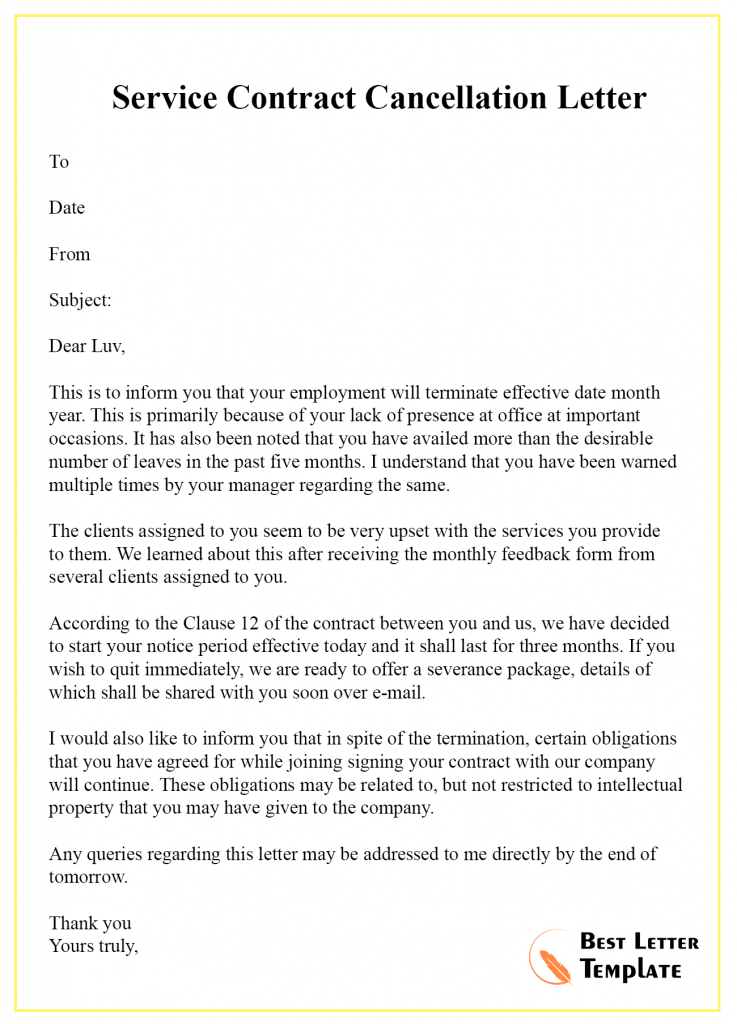Escape Subscription Shackles Reclaim Your Hard-Earned Cash

Ever feel like your money is slipping through your fingers like grains of sand? You diligently track your spending, brew your own coffee, and even bike to work. But there's a silent drain on your wallet: recurring subscriptions. Those seemingly small monthly fees for streaming services, gym memberships, or software you barely use can add up to a significant chunk of change over time. Regaining control of your finances starts with taking charge of these recurring expenses. One powerful tool in your arsenal is the often-overlooked art of writing a service termination request.
A service termination request, or as we'll call it, a "freedom letter," is a formal notice you send to a company to discontinue a service. It’s a simple yet surprisingly effective way to reclaim control of your spending and put that money toward more meaningful goals, like early retirement or that epic bike trip you’ve been dreaming about. It's about more than just saving a few bucks; it’s about conscious consumption and aligning your spending with your values.
The history of formal written cancellations likely parallels the rise of subscription services themselves. As businesses moved from one-time purchases to recurring billing models, the need for a standardized way to end these agreements became apparent. While verbal cancellations were likely common in the past, a written record protects both the consumer and the company, preventing misunderstandings and disputes. The increasing importance of consumer protection laws also fueled the adoption of formal cancellation procedures.
One of the main issues surrounding cancellation letters is the lack of clarity from service providers. Companies sometimes intentionally make it difficult to cancel, hoping you’ll simply give up and continue paying. Hidden fees, convoluted cancellation processes, and lengthy contract terms are all tactics used to keep you locked in. A well-crafted freedom letter cuts through this fog, clearly stating your intention to cancel and leaving no room for misinterpretation.
A simple service cancellation letter typically includes your account information, the service you wish to terminate, the effective date of cancellation, and a request for confirmation. It should be concise, professional, and unambiguous. For example, you might write: "I am writing to request cancellation of my monthly subscription to [Service Name], account number [Your Account Number], effective [Date]. Please confirm receipt of this request and the cancellation date." This simple act can have a profound impact on your financial well-being.
One benefit of using a formal cancellation request is clarity. It provides a written record of your intent to cancel, protecting you from future billing disputes. Another benefit is control. You dictate the terms of the cancellation, including the effective date. Finally, a well-written letter demonstrates professionalism and reinforces your right as a consumer to choose which services you pay for.
Creating a successful freedom letter is straightforward. First, gather your account details. Next, draft a concise letter stating your intent to cancel. Then, send the letter via certified mail for proof of delivery. Finally, follow up to confirm cancellation and ensure you're not billed further.
A quick checklist: Account number, service name, effective date, request for confirmation, certified mail, follow-up.
Step 1: Gather account info. Step 2: Draft the letter. Step 3: Send via certified mail. Step 4: Confirm cancellation.
Advantages and Disadvantages of Formal Cancellation Letters
| Advantages | Disadvantages |
|---|---|
| Provides a clear record of cancellation | Requires more effort than a phone call |
| Protects against future billing disputes | May involve postage costs (if sent physically) |
| Allows for specific cancellation dates |
Best Practice 1: Always get confirmation. Best Practice 2: Keep a copy of the letter. Best Practice 3: Send via certified mail. Best Practice 4: Be polite but firm. Best Practice 5: Know your contract terms.
Example 1: Gym membership. Example 2: Streaming service. Example 3: Magazine subscription. Example 4: Software license. Example 5: Online course.
Challenge 1: Difficulty finding contact information. Solution: Check the company website's terms and conditions. Challenge 2: Company makes cancellation difficult. Solution: Persist and escalate if necessary. Challenge 3: Unclear contract terms. Solution: Read the fine print. Challenge 4: Early termination fees. Solution: Factor these into your decision. Challenge 5: Automatic renewals. Solution: Set reminders to cancel before renewal.
FAQ 1: What if the company doesn't respond? FAQ 2: Can I cancel over the phone? FAQ 3: What if I have a contract? FAQ 4: What if I'm charged after cancelling? FAQ 5: What if I can't find my account number? FAQ 6: Can I cancel online? FAQ 7: What if I have a prepaid subscription? FAQ 8: How long does cancellation take?
Tips and tricks: Keep a spreadsheet of your subscriptions. Set reminders for cancellation dates. Negotiate better terms before cancelling.
Taking charge of your finances isn't about deprivation; it's about making conscious choices about where your money goes. A well-crafted service termination letter is a powerful tool in your arsenal. By understanding the importance of formal cancellation procedures, utilizing clear and concise language, and following best practices, you can reclaim your financial freedom and redirect your resources towards your true priorities. Don't let those small monthly fees drain your hard-earned cash. Take action today, write those freedom letters, and start building the life you want. Remember, every dollar saved is a dollar earned towards your financial independence and a step closer to a life of purpose and fulfillment.
Behr varnished ivory a warm and welcoming paint color
Unblocking your gut a guide to relieving bowel obstructions
Unlocking performance your guide to the vapor trail factory pro shop













